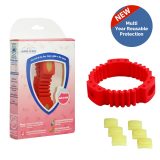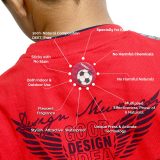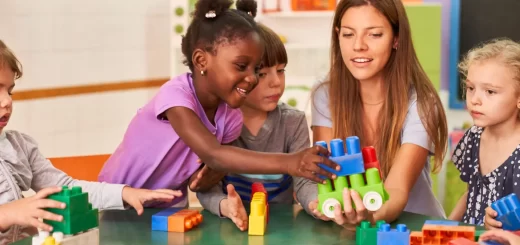Ultimate Babysitting Reminders: Essential Checklist for Parents & Sitters
Introduction
When it comes to babysitting, the safety and well-being of the child are paramount. Whether you’re a parent entrusting your little one to a sitter or a babysitter taking on the responsibility of caring for a child, a well-prepared checklist can make all the difference. This comprehensive guide outlines the essential reminders and checklist items to ensure a successful and enjoyable babysitting experience for everyone involved. Let’s dive into the ultimate babysitting reminders and essential checklist for parents and sitters.
Ultimate Babysitting Reminders: Essential Checklist for Parents & Sitters
Embarking on a babysitting journey requires meticulous planning and preparation. By following this detailed checklist, parents can ensure their child’s safety and well-being, while babysitters can feel confident and capable in their role. Remember, a well-prepared babysitting experience sets the stage for a positive relationship between parents, sitters, and the child.
Pre-Babysitting Preparation
Before the babysitting adventure begins, it’s crucial to ensure that all the necessary arrangements are in place:
- Communicate Expectations: Parents, clearly communicate your expectations to the babysitter. Discuss routines, meal plans, allergies, bedtime, and emergency contact information.
- Childproofing: Sitters, ensure that the environment is childproofed. Remove potential hazards, secure furniture, and cover electrical outlets.
- Gather Supplies: Parents, provide all necessary supplies, including diapers, wipes, baby food, and any specific comfort items.
- Emergency Plan: Create an emergency plan that includes medical information, contact numbers for parents, and nearby medical facilities.
- Meet and Greet: Arrange a meet-and-greet between the babysitter and the child before the actual babysitting day to establish familiarity and comfort.
Safety First
Safety should always be the top priority. Both parents and sitters should be well-versed in safety guidelines:
- CPR and First Aid Training: Sitters, it’s wise to have CPR and first aid training. Parents, ensure your sitter is knowledgeable in these areas.
- Childproofing Awareness: Parents, go over childproofing measures with your sitter. Sitters, stay vigilant about potential hazards.
- Supervision: Always maintain close supervision of the child, especially around water, stairs, and potentially dangerous objects.
- Safe Sleep: Ensure a safe sleeping environment for the child, adhering to guidelines for bedding and crib safety.
Nurturing and Engagement
Babysitting is not just about supervision; it’s about nurturing and engaging the child:
- Interactive Play: Engage the child in age-appropriate activities and play. Arts and crafts, reading, and imaginative play can foster a strong bond.
- Healthy Meals: Parents, provide clear instructions about meal and snack preferences. Sitters, prioritize nutritious and balanced meals.
- Positive Reinforcement: Use positive reinforcement to encourage good behavior and create a happy environment.
- Listening and Communication: Sitters, actively listen to the child’s needs and concerns. Parents, encourage open communication between your child and the sitter.
Daily Routine
Maintaining a consistent routine helps children feel secure and comfortable:
- Naptime: Stick to the child’s regular nap schedule to ensure they are well-rested.
- Mealtime: Follow the mealtime routine established by parents. Sitters, be mindful of any allergies or dietary restrictions.
- Playtime: Engage the child in both active and quiet playtime activities throughout the day.
- Screen Time: Limit screen time and prioritize interactive play and creative activities.
Handling Challenging Situations
Even with the best planning, challenges can arise. Here’s how to handle them:
- Tantrums: Stay calm and offer comfort. Distract the child with a favorite activity or toy.
- Separation Anxiety: Give the child time to warm up to the sitter. Encourage them with familiar items from home.
- Medical Emergencies: In case of a medical emergency, follow the pre-established emergency plan and contact parents immediately.
FAQs
Q: How do I choose the right babysitter? A: Look for someone with relevant experience, positive references, and a warm and caring personality.
Q: What should I include in the emergency plan? A: The emergency plan should include medical information, emergency contact numbers, and directions to the nearest medical facility.
Q: How do I handle a picky eater during babysitting? A: Offer a variety of healthy options and respect the child’s preferences while encouraging them to try new foods.
Q: Can I bring my own toys to entertain the child? A: Absolutely! Bringing along some age-appropriate toys or activities can help keep the child engaged and entertained.
Q: How can I ensure a smooth transition for the child during drop-off? A: Allow for a gradual transition. Spend a few moments with the child and sitter together before leaving.
Q: What if the child gets a minor injury while under the sitter’s care? A: Administer basic first aid as necessary and inform the parents about the incident as soon as possible.
Conclusion
Babysitting is a rewarding experience that demands responsibility, care, and preparation. Both parents and sitters play a vital role in ensuring the child’s safety, well-being, and happiness. By following the ultimate babysitting reminders and essential checklist, parents can entrust their child to a capable sitter, and babysitters can provide a nurturing and engaging environment for the child. Remember, a well-prepared babysitting experience lays the foundation for a strong and positive relationship between all parties involved.















